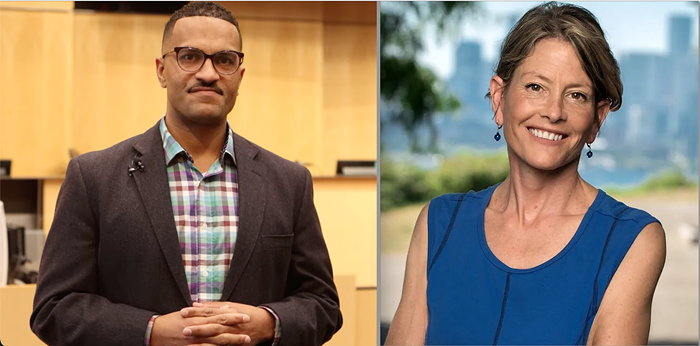On December 11, 2006, the Seattle Times ran a front-page story by reporters Cara Solomon and Emily Heffter condemning the quality of the education at John Marshall Alternative School. The article ran under the headline, "One school's legacy: 'There's no learning.'" A large photo (which has since been removed from the Times website) featured a telling image of a boy in a classroom with his head on his desk. The caption read, "A student sleeps at John Marshall Alternative School in Seattle..."
There was only one problem: "He wasn't sleeping," says Heather Wixom, who teaches Brandon Pamon in a special-education classroom for middle-school students with severe behavioral problems.
Wixom says a group of district evaluators paid a surprise visit to her classroom that day, with journalists from the Times in tow. Pamon, who has mild retardation and severe behavioral problems, began to curse at the group of strangers. "I said, 'Brandon, what do you need to do?' So he put his head in his jacket, to cope with the strange people in his environment," Wixom says.
Wixom says none of the evaluators disclosed the identities of the journalists to her—or, indeed, that they were journalists. Seattle Times education editor Kim Eckart says, "Both the district and the principal were aware of our presence that day." According to the Times story, the team was expected to turn in a report recommending the closure of John Marshall, which contains a middle school and a high school, in late 2007. This month, the school won a one-year extension until the fall of 2008.
"I was furious," Wixom says. "The fact that they misrepresented a student in my classroom to make their point really angered me and it really angered the student." (Barry Fitzsimmons, Seattle Times director of photography, says his photographer reported the student was asleep throughout the visit.)
Melinda Hall says her son was deeply offended by the picture. She says Pamon has struggled his whole life, but has made progress in Wixom's classroom. He got kicked out of his last school for behavioral problems, she says. There may be no other place for him to go.
"He always had problems, ever since day one," Hall says. "He's a little slow and at times he has anger."
Wixom says many of her students are like Pamon; they've been through every alternative program in the district and this may be their last chance.
"I picked the hardest class you can possibly have," says Wixom, who has been teaching full time for just two years. She says the district, and the Seattle Times, takes an unrealistic view of John Marshall's staff. "Nobody wants this job," she says. "But they're here, and they're here every day."
She says she and many of her coworkers are willing to be teachers, counselors, social workers, and parents—all at once.
"I think that's a reality that the district doesn't really take into mind," she says. "When you deal with a population of students who cuss at you and walk out to get out of showing what they don't know, you come across a lot of teachers who just throw their hands up."
The Seattle Times story did cite some damning indicators: Only 24 percent of the student body graduated on time in 2005. Some teachers, the article said, lead classes they aren't qualified to teach.
However, the article left out a positive report on the school issued by a University of Washington researcher just three days before the story came out. (Eckart says she was unaware of the report.) Professor Richard Neel, who studies special education, commended the school for a "feeling of safety and acceptance," improved staff stability, and a deep commitment to the student body's special needs.
The report wasn't without criticism—including a need for more training and tools for dealing with the increasing number of students with psychiatric problems. But Neel's analysis is hardly the harsh censure offered by the Seattle Times.
John Marshall principal Joe Drake may be at the heart of this disconnect. His style of giving more decision-making control to individual staff members has rankled some district employees, and his idealism may come across as zealousness. The Times story cites a dozen current and former staff members complaining that Drake doesn't do his job. In the same story, Drake described the proposal to shutter the school as, according to the paper, an "act of racism against the school's many students of color." He refused to meet with a team of evaluators. Drake could not be reached for comment. ![]()


















